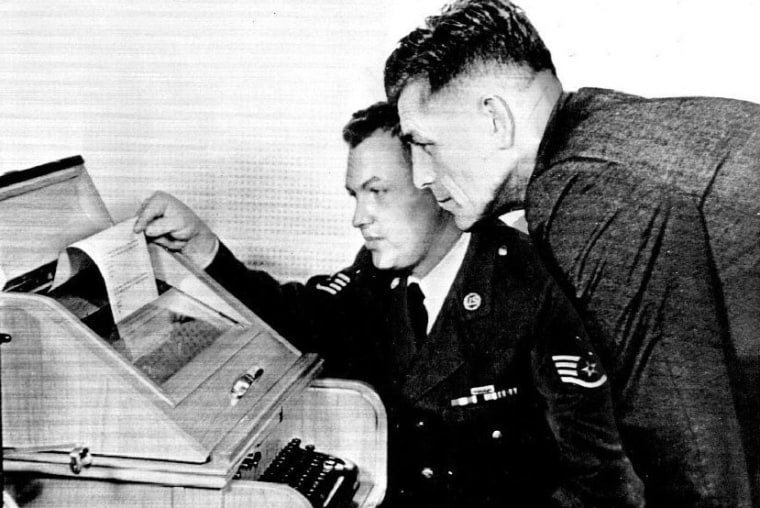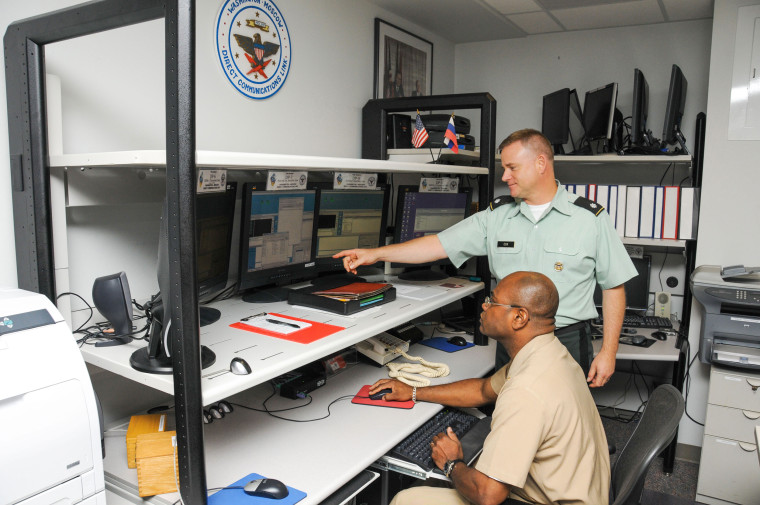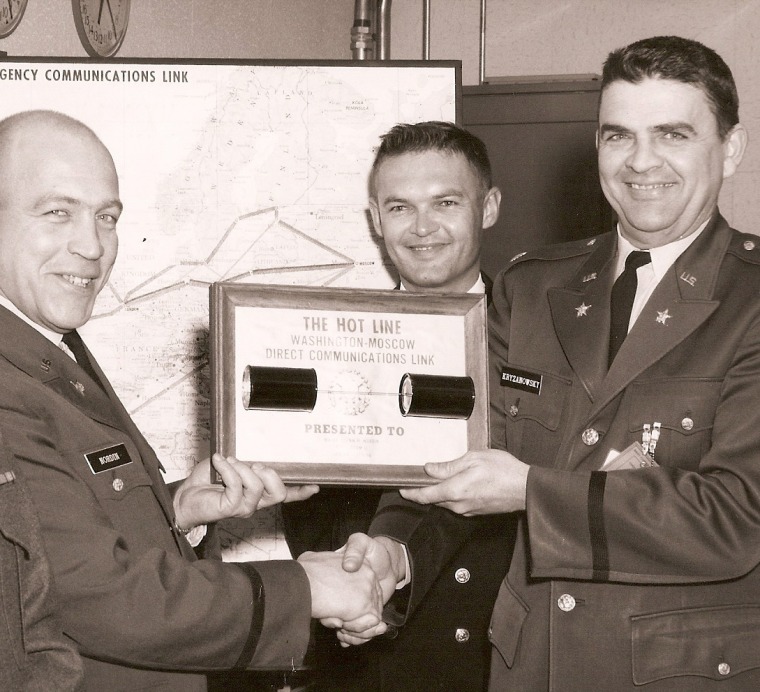New tensions between the United States and Russia have resurfaced an old myth about the Cold War foes' emergency communications link, known as the "Red Phone."
It is not a phone. It never has been.
That false image, perpetuated in popular culture ("Dr. Strangelove," "Fail Safe,") and campaign ads ("3 a.m.") masks a less evocative reality: secure teletypes, faxes and computer links transmitting encrypted text messages between the Kremlin and Pentagon.

But their purpose is no less urgent: avoiding war between the world's two biggest nuclear powers.
It isn't used very often. But President Obama resorted to it in October, to warn Russian President Vladimir Putin against using hackers to disrupt the U.S. election.
Related: What Obama Said to Putin on the Red Phone About the Election Hack
Obama delivered his message by email over a secure satellite connection, a far cry from the wire telegraph that served the first transmissions a half-century ago.

Back then, the United States had a relatively new system of hotlines used to defend America against a nuclear attack. These phones, operated by the Continental Air Defense Command, were often red, to distinguish them from the everyday black.
That may be where the "red phone" myth began.
The real Washington-Moscow hotline was created in 1963, after President John F. Kennedy and Soviet premier Nikita Khrushchev came to the brink of war during the Cuban Missile Crisis, a showdown aggravated by communication delays.
The system used teletype and telegraph terminals manned by military translators, tasked with relaying messages from their commanders-in-chief through two systems: a radio line and a transatlantic cable. The American terminal was in the Pentagon, where it remains.
The first test message from Washington to Moscow, on Aug. 30, 1963: "The quick brown fox jumped over the lazy's dog's back 1234567890."

Over the years, the systems were updated with advances in technology: satellites, fax machines, computers, email. The point was to exchange information quickly, but never verbally, to avoid misunderstandings.
Maj. Glenn Nordine was one of the Russian-speaking Army translators assigned to operate the Pentagon terminal when it was first installed. He recalled a massive piece of machinery in the National Military Command Center, near the seats of country-desk officers and at the opposite end of corridor-like room from a glass-walled cubicle where a general sat.
On that general's desk was a red phone.
It was a link to the White House, used by presidents to convey and receive information on all sorts of issues, Nordine, 87, said.
That also may be where the red-phone myth began, he said.

Nordine worked in that room until 1966, and during that time the red phone was never used to dictate a message to Russia through the Moscow link, he said.
"The only transmissions on that were test messages every hour," Nordine said. "One hour, the Russians would text. The next hour we would test."
The first American president to reportedly use it was Lyndon Johnson, who in 1967 communicated with the Soviets' Alexei Kosygin on the unfolding Six Day War in the Middle East. Richard Nixon reportedly used it four years later to discuss tensions between India and Pakistan with Leonid Brezhnev, and again in 1973 during another Middle East flareup. Jimmy Carter reportedly used it to discuss the Soviet invasion of Afghanistan, and Ronald Reagan reportedly used it often and not only in crisis situations.

The end of the Cold War diminished the urgency of having the direct link, but the need did not fade. The system continued receiving upgrades into the Obama administration, and to this day operators on both sides test it hourly.
In 2013, the Obama administration added a channel intended to send email messages and attachments about cyber incidents. The president never used it — until days before the 2016 election.
Several intelligence officials told NBC News the use of the system communicated just how serious the Russian hacking situation had become.
